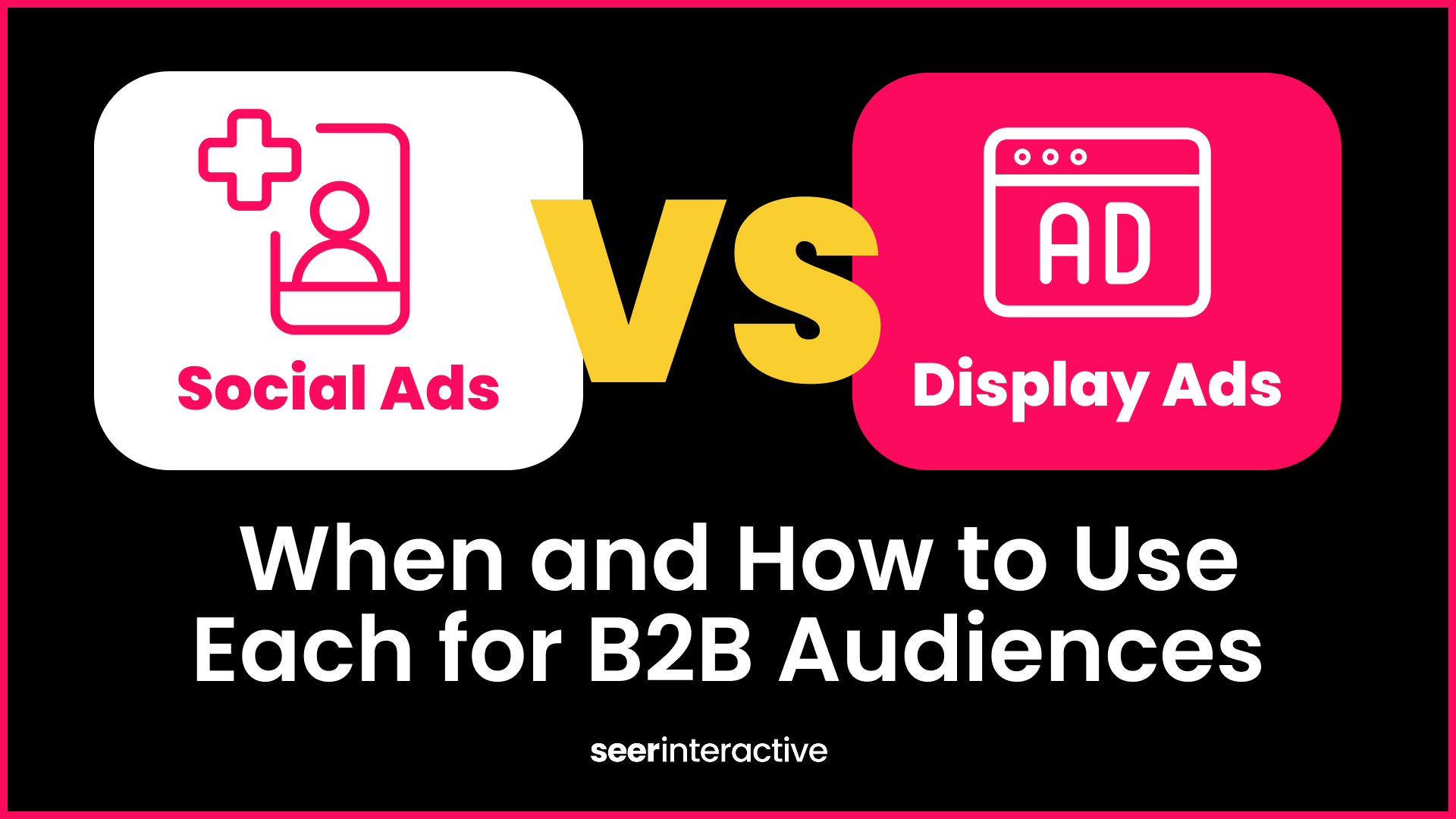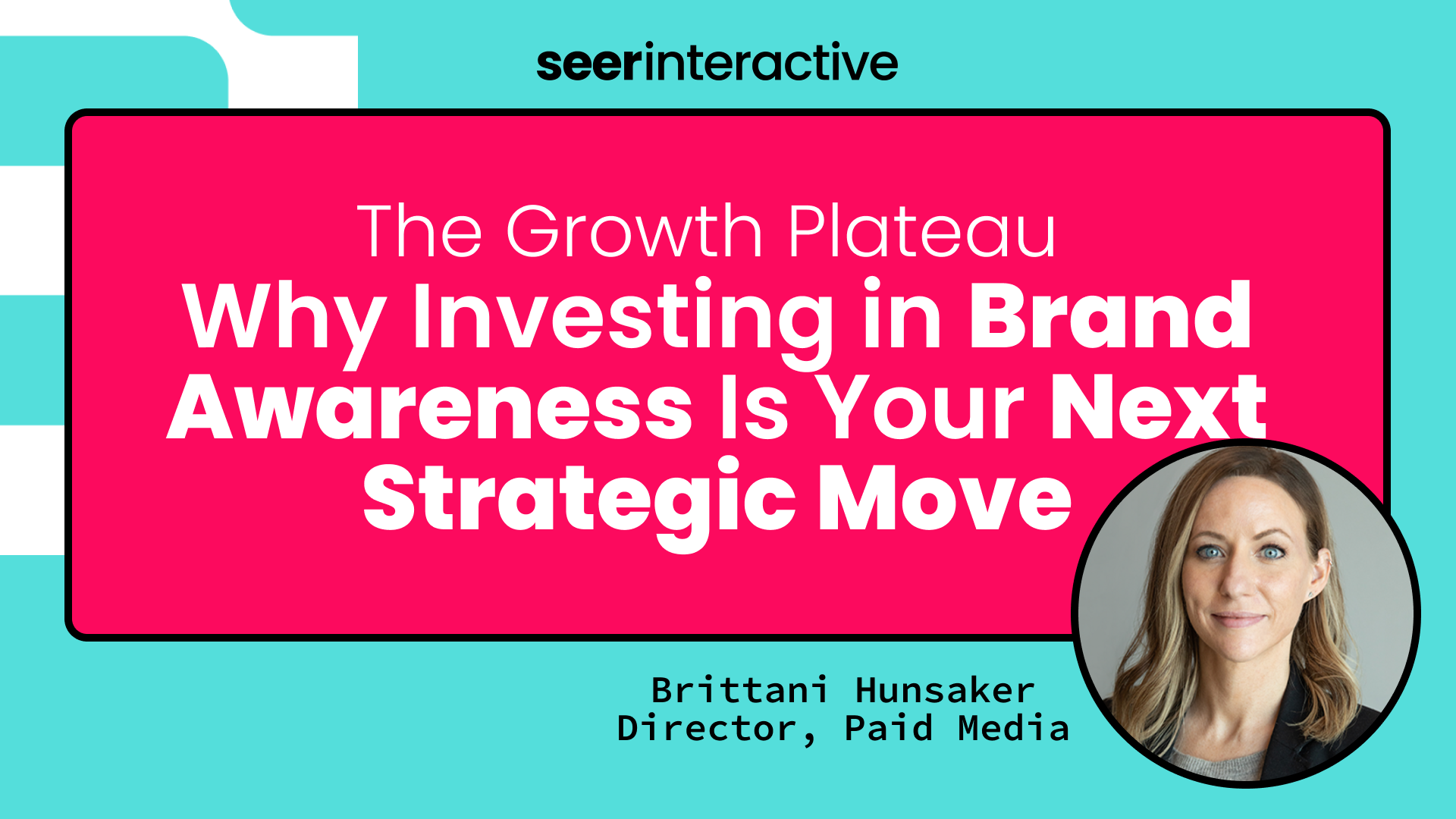With Google’s long-awaited Performance Max reporting updates rolling out (including channel-level breakdowns, search term visibility, and richer asset data) the days of flying blind inside PMax are finally coming to an end. The latest updates to Performance Max are giving advertisers something we’ve been craving since launch: transparency.
But rather than wait for the data to drop, we flipped the script.
We asked our Paid Media team:
👉 What do you believe the new data will show?
👉 How will it change your strategy?
👉 And what might it prove wrong about how we’ve been using Performance Max so far?

This post is a roundup of our team’s predictions, gut checks, and hot takes — the things we expect to see (and the surprises we’re bracing for) once reporting starts rolling out.
Because great marketers don’t optimize after the fact, you forecast, test, and adjust in real time.
Let’s get into it. ⬇️
A Note on Transparency... And Its Limits
With all the excitement around the new visibility, it's worth grounding ourselves in one truth: more data doesn’t always equal clarity. One of the guiding philosophies at Seer, is that while access to new data is powerful, it can also give a false sense of control if we don't ask deeper questions.
Yes, channel-level breakdowns and asset reporting are major wins, but we also need to stay critical:
- Are we being shown the full picture, or just what the platform wants us to see?
- Is that “Excellent” asset rating actually driving business outcomes?
- Are we being lulled into comfort by better reports without checking for sampling issues or attribution gaps?
As we work through these predictions, we go beyond forecasting results. Let's interrogate them.
The real opportunity? It’s smarter interpretation of reporting.
What We Expect to See in the New Data
The team had strong predictions about which channels might rise (or fall) once we get visibility:
“I think the mid/top funnel channels like display and video are going to be huge underperformers. I’ve always assumed that PMax uses top-funnel channels to increase spend, and we’ll likely see big discrepancies between these and higher-intent channels like Search and Shopping.” — Max Trotter
“I think YouTube could be a real sleeper agent. We know that YouTube and video in general can create a halo effect on down funnel performance, but I wonder if we’ll start to see and understand this in a more concrete way with this new level of visibility.” — Michelle Cangialosi
“With increased visibility into channel-level performance, I think we’ll get clearer insight into how YouTube contributes to conversion paths — not just engagement. And with Google pushing richer video assets in PMax, I suspect YouTube’s influence will be bigger than we thought, especially with mobile-first audiences.” — Rene Radloff
“I wouldn’t be shocked if Gmail or Discover placements quietly outperform YouTube in certain verticals. I also think we’ll see some asset groups doing way more work than we realized.” — Brittany Sager

At the same time, not all channels are expected to impress:
“I can potentially see Gmail ads as an underperformer. Gmail has always been attractive for their high impression volume and efficient CPCs, but they often don’t close the loop on conversions. With improved conversion path transparency, Gmail may be ‘exposed’ as a high click, low converting channel.” — Rene Radloff
How This Visibility Could Reshape Strategy
The biggest shift? Budget control, client trust, and platform accountability.
“We’re going to see a large shift in budgets right when visibility improves. For some clients, it’ll unlock new investment. But for others — especially the skeptics — it may validate their concerns and prompt divesting. More data = more opportunity to cherry pick.” — Max Trotter
“Increased visibility should help ease a lot of client hesitancy, but I’m also expecting more scrutiny. Clients will want to better understand (and potentially control) how PMax is optimizing.” — Cassie Neville
“Yes, I think being able to really understand performance drivers in a meaningful way will help build trust in PMax. I often hear ‘yeah, we tried PMax once and it didn’t work.’ At the very least, I think it’ll get clients interested in giving it another shot.” — Michelle Cangialosi
“This channel- and asset-level visibility gives us the chance to impact cross-channel strategy in new ways. By combining all types of assets and placements in one campaign AND now finally seeing that mix segmented, we can determine gaps in strategy. This reporting will make it easier to see shining stars, strategic gaps, and underperformers in a whole new light.” — Amanda Korth
But not everyone agrees that more data is the fix...
“I don’t think the majority of hesitancy comes from a lack of visibility — it’s about the lack of control. I’ve had clients share PMax ads they’ve seen and hated, and if performance isn’t strong, that frustration doubles down. Even if we can show data behind assets, it doesn’t change the fact that we can’t control how they’re combined. And that’s the sticking point.” — Heather Smith
Search Term Predictions: What Will We Learn?
One of the most anticipated features is full search term reporting. And the team has big expectations:
“I suspect there will be a lot of overlap between PMax and Standard Search, especially for ecommerce advertisers who have segmentation by product type, brand, or promotion. That insight alone could reshape how we structure future campaigns.” — Kurtis Nysmith
“I expect overlap, but that’s the opportunity. If a search term converts better in PMax, we can de-prioritize it in Search. If it performs better in Search, we leave PMax broader and let Search pick up the precision.” — Cassie Neville
“Show me the brand terms you’ve engulfed — but also open my mind to what we’re not targeting yet. I want to see what’s missing, like I would from a DSA ad group.” — Josh Meyers
Asset Testing & Creative Strategy: What Changes Now?
The new reporting will also open up creative testing in a big way.
“I’m curious to see how the style of creative aligns with user intent, funnel stage, and persona types. If we learn lifestyle imagery is outperforming product shots, for example, that could inform both paid and organic strategy.” — Cassie Neville
“Creative might become the way we can subtly influence placement, even if we don’t have direct control. Upload only video? You’re probably skipping Discovery. Upload static only? YouTube won’t prioritize your asset group. I want to test that.” — Josh Meyers
“We could actually make the case for certain asset types — more video or more static — depending on channel performance. The lack of diverse assets hurts us. When Google tries to generate its own, it often creates poorly branded versions that miss the mark and don’t resonate with our audience.” — Heather Smith
“I’m ready to build a creative matrix by placement. We’ve always known different channels require different messaging — now we can prove it.” — Brittany Sager

Bold Predictions: What Might This Prove Wrong?
What assumptions are we about to debunk?
“Some brands segment PMax campaigns by ROAS or margin buckets — but if the algorithm doesn’t assign search terms properly across those campaigns, that whole strategy falls apart.” — Kurtis Nysmith
“I think we’ll see performance shift just from the fact that reporting is improving. As transparency increases, I wouldn’t be surprised if Google changes what they let us see — and how they spend.” — Josh Meyers
“Hot take — I think we’ll uncover a lot of wasted ad spend. Once we see what channels are actually driving performance, I expect some advertisers to shift budget directly to the top performers or exclude all others. PMax has always felt a little like a Hail Mary — it works, sure, but I want to know why. If this new release actually tightens up the data and improves efficiency, we might finally be able to double down strategically.” — Heather Smith
“We might learn that video isn’t always the hero. Static might outperform in some placements. Also, I’m skeptical that ‘Excellent’ asset quality = actual performance. I want the data to prove it — or not.” — Brittany Sager
The Metrics Everyone’s Watching
The team is aligned on one thing: we’re finally getting answers to questions that have been sitting in the black box for too long.
Search Terms: The Visibility We’ve Needed
“Search terms. We’ve been in the dark for too long. I want to know what’s driving conversions, what’s wasting spend, and what we haven’t even thought to target yet. It’s like opening up a DSA ad group for the first time — show me everything.”
— Josh Meyers
Search term transparency could reshape how we build negative keyword lists, allocate match types, and structure campaigns across PMax and Standard Search.
Maps Reporting: A Location-Driven Unlock
“Channel reporting on Google Maps will unlock another PMax mystery! With Maps placements being fairly exclusive to Performance Max (besides location extensions), this campaign type is the only way to promote pins directly. We’ll finally learn how impactful this placement is to overall campaign performance — critical for retailers and location-driven businesses.”
— Amanda Korth
For brands with a physical footprint, this could be a game-changer. Until now, we haven’t been able to isolate how Google Maps contributes to conversions — now we’ll know whether those pins are just pretty… or powerful.
What Happens Next
We’ll be revisiting these predictions once the new PMax reports go live.
💭 What did we get right?
💭 What totally surprised us?
💭 What will we change moving forward?
This is the future of performance strategy: predict → test → revisit → evolve.
Until then, we’ll be:
- Building smarter test plans
- Revisiting audience and creative strategies
And getting a lot more curious about what we don’t know yet.
Are you curious to test some of the latest Google developments in your paid media strategy? Let's talk.







